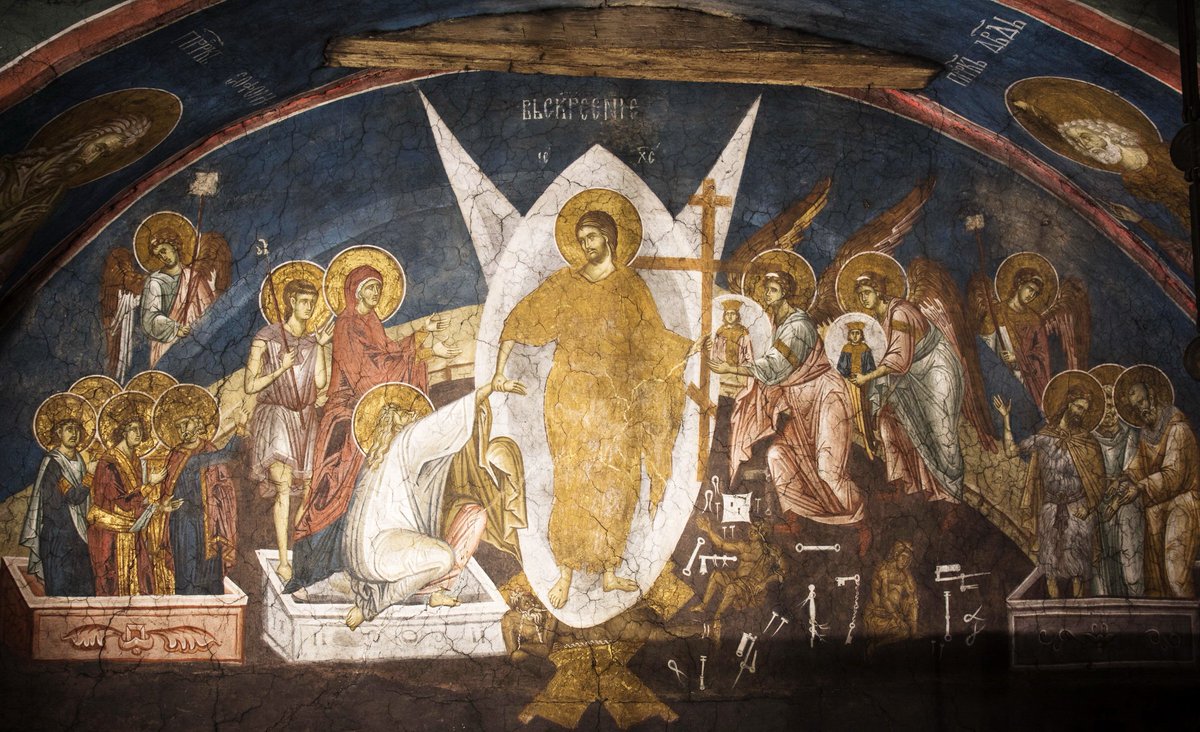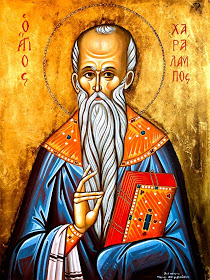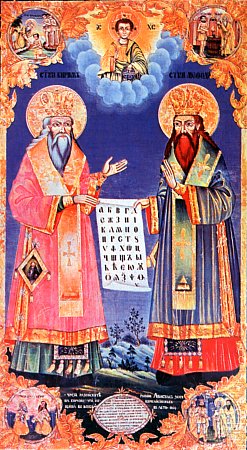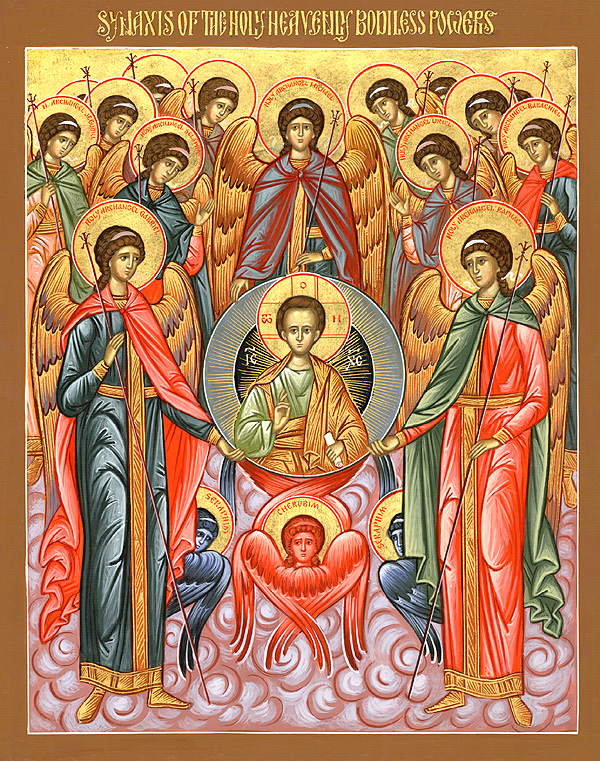Calendar
The Great Lent
15. March 2021 - 9:37 THE INSTITUTE OF LENT
THE INSTITUTE OF LENTThere are institutes and symbols adopted by nations, churches or groups of men which represent certain ideals accumulated in the past. These institutes, that is precepts recognized as authoritative, and symbols represent the thoughts and feelings of those who created or adopted them and put in them all the experience of the past, often through struggle and sacrifice. A few feet of ribbon for instance, red, blue and white in color, have little value as is. But if one puts them in a certain pattern of stripes and stars, they become the flag of the United States and represent the ideals and unity of the people of America. The flag reminds us of the people's struggle for liberty. It represents the national unity which attained for them their rights as a people. The same could be said for the institutes of a nation, army or any group of people. These institutes are created by the people and are used by them in certain ways for certain aims. Some of these institutes are the means for achieving certain values and ideals. In the life of the Church of Christ there are many institutes created and maintained to meet the needs of the people - the Ecclesia. Among these is the Great Lent which falls within the year-cycle of the life of the Church before Pascha-Easter. Lent is the period of time for self-examination by the believer; of putting on the spiritual armor of the Militant Church; of applying the riches of prayers and almsgiving; of adopting deeply the meaning of repentance; of atonement and reconciliation with God Almighty.
Saint Petka of the Balkans, you are glory and praise of Belgrade
26. October 2020 - 10:07Saint Petka or Parascheva of the Balkans (Greek Παρασκευή - Friday) was an ascetic female saint of the 11th century. She was born in the town of Epibatos (today Selimpaşa) on the shore of the Sea of Marmara between Silivri and Constantinople in Thrace in the half of X century. She was of Serbian origin, from a wealthy and pious family. She had a brother, whose name was Euthymios, and who took monastic vows when he was very young, and later he was elected for Bishop of Madyta (989-996).
Saint Haralambos the Holy Martyr of Magnesia
23. February 2020 - 18:35 This great saint, Haralambos, was a bishop in Magnesia who suffered for Christ in his 113th year. When a terrible persecution began during the reign of Emperor Septimius Severus, the elderly Haralambos did not hide from the persecutors. Instead, he freely and openly preached the Christian Faith. He endured all tortures as though he were in someone else’s body. When they skinned him alive, the forgiving elder said to the emperor’s soldiers: “Thank you, my brethren, for in scraping my old body you renew my spirit for a new eternal life.” He worked many miracles and converted many to the Faith. Even the emperor’s daughter, Galina, abandoned the idolatry of her father and became a Christian. Condemned to death and brought to the place of execution, St. Haralambos raised his hands to heaven and prayed to God for all people, that God would grant them bodily health and spiritual salvation and that He would multiply their fruit of the earth: “O Lord, Thou knowest that men are flesh and blood; forgive them their sins and pour out Thy grace on all!” After praying, this holy elder gave up his soul to God before the executioner lowered the sword on his neck. He suffered in the year 202. The emperor’s daughter, Galina, removed his body and honourably buried it.
This great saint, Haralambos, was a bishop in Magnesia who suffered for Christ in his 113th year. When a terrible persecution began during the reign of Emperor Septimius Severus, the elderly Haralambos did not hide from the persecutors. Instead, he freely and openly preached the Christian Faith. He endured all tortures as though he were in someone else’s body. When they skinned him alive, the forgiving elder said to the emperor’s soldiers: “Thank you, my brethren, for in scraping my old body you renew my spirit for a new eternal life.” He worked many miracles and converted many to the Faith. Even the emperor’s daughter, Galina, abandoned the idolatry of her father and became a Christian. Condemned to death and brought to the place of execution, St. Haralambos raised his hands to heaven and prayed to God for all people, that God would grant them bodily health and spiritual salvation and that He would multiply their fruit of the earth: “O Lord, Thou knowest that men are flesh and blood; forgive them their sins and pour out Thy grace on all!” After praying, this holy elder gave up his soul to God before the executioner lowered the sword on his neck. He suffered in the year 202. The emperor’s daughter, Galina, removed his body and honourably buried it.
The Holy Wonderworkers and Unmercenary Physicians Cosmas and Damian of Asia Minor
 The Holy Wonderworkers and Unmercenary Physicians Cosmas and Damian were born somewhere in Asia Minor by their pagan father and Christian mother. When their father died, while they were still quite small children, their mother St. Theodata raised them in Christian piety. Trained and skilled as physicians, they received from the Holy Spirit the gift of healing people's illnesses of body and soul by the power of prayer. With fervent love for both God and neighbor, they never took payment for their services, so that is why they were called the Unmercenary Physicians. They strictly observed the command of our Lord Jesus Christ, "Freely have you received, freely give." (Mt. 10:8).
The Holy Wonderworkers and Unmercenary Physicians Cosmas and Damian were born somewhere in Asia Minor by their pagan father and Christian mother. When their father died, while they were still quite small children, their mother St. Theodata raised them in Christian piety. Trained and skilled as physicians, they received from the Holy Spirit the gift of healing people's illnesses of body and soul by the power of prayer. With fervent love for both God and neighbor, they never took payment for their services, so that is why they were called the Unmercenary Physicians. They strictly observed the command of our Lord Jesus Christ, "Freely have you received, freely give." (Mt. 10:8).
Saint Cyril and Saint Methodius Equal to the Apostles
24. May 2019 - 15:31 Saints Cyril and Methodius were brothers from Thessalonica of distinguished and wealthy parents, Leo and Maria. The older brother Methodius spent ten years as an officer among the Macedonian Slavs and thus learned the Slavic language. After that Methodius withdrew to Mount Olympus and dedicated himself to the monastic life of asceticism. It was here that Cyril (Constantine) later joined him. When the Khazarite king, Kagan, requested preachers of the Faith of Christ from Emperor Michael III then, by command of the emperor, these two brothers were found and sent among the Khazars. Convincing King Kagan of the Faith of Christ, they baptized him along with a great number of his chief assistants and even a greater number of the people. After a period of time, they returned to Constantinople where they compiled the Slavonic alphabet consisting of thirty-eight letters and proceeded to translate ecclesiastical books from Greek into Slavonic. At the request of Prince Rastislav, they traveled to Moravia where they spread and established the devout Faith and multiplied books and distributed them to the priests to teach the youth. At the request of the pope, Cyril traveled to Rome where he became ill and died on February 14, 867 A.D. Then Methodius returned to Moravia and labored to strengthen the Faith of Christ among the Slavs until his death. Following his death - he died in the Lord on April 6, 885 A.D. - his disciples, THE FIVE FOLLOWERS, with St. Clement, the bishop at the head, crossed the Danube River and descended to the south into Macedonia, where from Ohrid they continued their labor among the Slavs begun by Cyril and Methodius in the north.
Saints Cyril and Methodius were brothers from Thessalonica of distinguished and wealthy parents, Leo and Maria. The older brother Methodius spent ten years as an officer among the Macedonian Slavs and thus learned the Slavic language. After that Methodius withdrew to Mount Olympus and dedicated himself to the monastic life of asceticism. It was here that Cyril (Constantine) later joined him. When the Khazarite king, Kagan, requested preachers of the Faith of Christ from Emperor Michael III then, by command of the emperor, these two brothers were found and sent among the Khazars. Convincing King Kagan of the Faith of Christ, they baptized him along with a great number of his chief assistants and even a greater number of the people. After a period of time, they returned to Constantinople where they compiled the Slavonic alphabet consisting of thirty-eight letters and proceeded to translate ecclesiastical books from Greek into Slavonic. At the request of Prince Rastislav, they traveled to Moravia where they spread and established the devout Faith and multiplied books and distributed them to the priests to teach the youth. At the request of the pope, Cyril traveled to Rome where he became ill and died on February 14, 867 A.D. Then Methodius returned to Moravia and labored to strengthen the Faith of Christ among the Slavs until his death. Following his death - he died in the Lord on April 6, 885 A.D. - his disciples, THE FIVE FOLLOWERS, with St. Clement, the bishop at the head, crossed the Danube River and descended to the south into Macedonia, where from Ohrid they continued their labor among the Slavs begun by Cyril and Methodius in the north.
Synaxis of the Archangel Michael and the Other Bodiless Powers
20. November 2018 - 15:39 The Synaxis of the Chief of the Heavenly Hosts, Archangel Michael and the Other Heavenly Bodiless Powers: Archangels Gabriel, Raphael, Uriel, Selaphiel, Jehudiel, Barachiel, and Jeremiel was established at the beginning of the fourth century at the Council of Laodicea, which met several years before the First Ecumenical Council. The 35th Canon of the Council of Laodicea condemned and denounced as heretical the worship of angels as gods and rulers of the world, but affirmed their proper veneration.
The Synaxis of the Chief of the Heavenly Hosts, Archangel Michael and the Other Heavenly Bodiless Powers: Archangels Gabriel, Raphael, Uriel, Selaphiel, Jehudiel, Barachiel, and Jeremiel was established at the beginning of the fourth century at the Council of Laodicea, which met several years before the First Ecumenical Council. The 35th Canon of the Council of Laodicea condemned and denounced as heretical the worship of angels as gods and rulers of the world, but affirmed their proper veneration.
A Feast day was established in November, the ninth month after March (with which the year began in ancient times) since there are Nine Ranks of Angels. The eighth day of the month was chosen for the Synaxis of all the Bodiless Powers of Heaven since the Day of the Dread Last Judgment is called the Eighth Day by the holy Fathers. After the end of this age (characterized by its seven days of Creation) will come the Eighth Day, and then “the Son of Man shall come in His Glory and all the holy Angels with Him” (Mt. 25:31).






